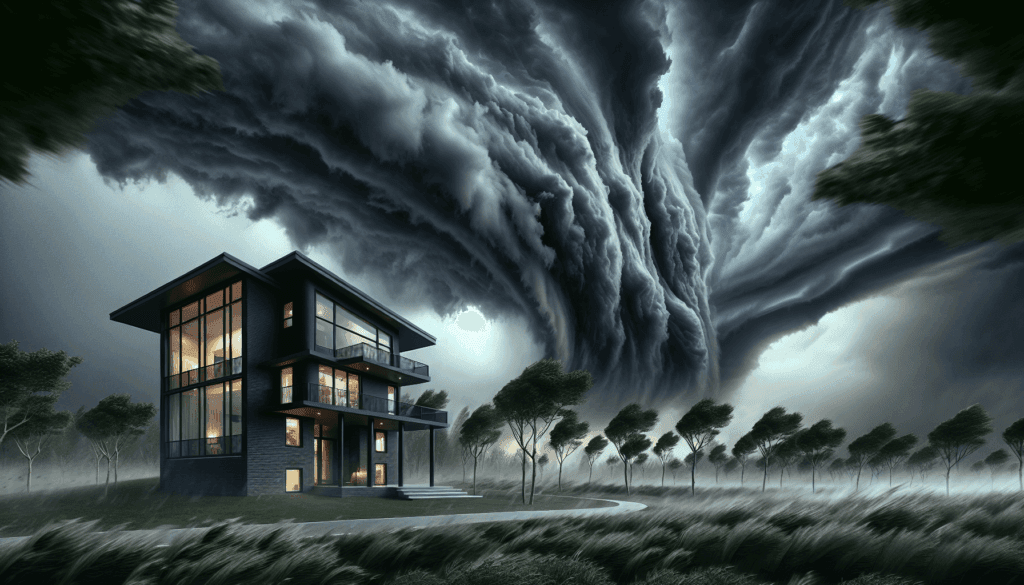In “Preparing for Nature’s Fury: Building a Resilient Society,” you will discover a comprehensive guide to fortifying our communities against the inevitable challenges posed by natural disasters. This article meticulously examines the historical context of disaster preparedness, tracing its evolution and highlighting key milestones that have shaped contemporary practices. It delves into current trends, shedding light on cutting-edge developments and technological advancements that bolster societal resilience. Through the lens of detailed case studies and comparisons of different viewpoints, it presents a balanced, evidence-based analysis, underscoring the critical importance of a proactive approach. By offering insightful predictions and discussing future implications, this article not only informs but equips you with the knowledge needed to navigate an increasingly unpredictable world.
Table of Contents
Preparing for Nature’s Fury: Building a Resilient Society
Have you ever wondered how prepared we truly are for nature’s devastating forces?

This image is property of images.pexels.com.
Overview
Natural disasters have been wreaking havoc on human civilization since its inception. As climate change accelerates, these events are becoming more frequent and destructive. From hurricanes and wildfires to earthquakes and floods, nature’s fury is a formidable opponent. The need to build a resilient society has never been more critical. This article delves into the importance of resilience in the face of natural disasters, exploring history, current trends, and future implications.
Thesis Statement
To create a society that can withstand the increasing threats posed by natural disasters, it is essential to build resilience by learning from historical events, understanding current trends, implementing comprehensive strategies, and fostering a culture of preparedness.
Historical Context
To understand the present, we must reflect on the past. Historically, natural disasters have shaped civilizations. The 79 AD eruption of Mount Vesuvius buried the cities of Pompeii and Herculaneum, serving as a stark reminder of nature’s power. The 1755 Lisbon earthquake, followed by a tsunami and fires, killed thousands and led to significant changes in European society, including advancements in seismology and urban planning.
Significant Historical Events
| Event | Date | Impact |
|---|---|---|
| Mount Vesuvius Eruption | 79 AD | Buried cities, cultural impact |
| Lisbon Earthquake | 1755 | 30,000-50,000 deaths, urban and scientific advancement |
| Indian Ocean Tsunami | 2004 | 230,000-280,000 deaths, prompted global humanitarian response |
These historical events highlight the importance of preparedness and the potential for long-term societal transformation in the aftermath of disasters.
Current Trends
Today’s world faces an unprecedented frequency of natural disasters, exacerbated by climate change, urbanization, and environmental degradation. Hurricanes, wildfires, and floods are occurring more frequently and with greater intensity.
Recent Developments
| Trend | Factors | Consequences |
|---|---|---|
| Frequent Hurricanes | Climate change, sea temperature rise | Destruction of infrastructure, loss of life |
| Intense Wildfires | Drought, global warming | Property destruction, ecological damage |
| Severe Flooding | Urbanization, deforestation | Disease spread, displacement of communities |
The global focus on reducing disaster risk and enhancing resilience is gaining momentum, evidenced by frameworks like the Sendai Framework for Disaster Risk Reduction.

This image is property of images.pexels.com.
Key Concepts and Definitions
To navigate the complex subject of resilience, it’s imperative to understand key concepts and terminologies.
Defining Resilience
Resilience refers to the ability to prepare for, withstand, and recover from adverse events. It encompasses various domains, including infrastructure, communities, and ecosystems.
| Term | Definition |
|---|---|
| Resilience | Ability to survive, adapt, and grow in the face of adversity |
| Disaster Risk Reduction (DRR) | Strategies aimed at reducing damage caused by natural disasters |
| Climate Adaptation | Adjustments in systems in response to climate change effects |
These definitions provide the groundwork for exploring how resilience can be cultivated across different sectors.
Detailed Exploration
The journey to building a resilient society begins with understanding its multifaceted nature. Below, we delve into critical areas that contribute to resilience, examining them in detail.
Infrastructure Resilience
Resilient infrastructure is the backbone of any society. Ensuring that buildings, roads, and utilities can withstand natural disasters is paramount.
Key Components
- Engineering Standards: Adopting strict building codes.
- Redundancy: Creating backup systems for critical services.
- Sustainability: Using eco-friendly materials and methods.
Community Preparedness
A resilient society depends on the preparedness of its communities. Awareness, education, and proactive measures can save lives.
Key Strategies
- Awareness Campaigns: Educating the public on disaster preparedness.
- Emergency Plans: Developing and rehearsing community response plans.
- Local Leadership: Empowering local leaders to coordinate efforts.
Ecosystem Management
Maintaining healthy ecosystems can mitigate the effects of natural disasters. For instance, mangroves act as natural barriers against tsunamis and storm surges.
Key Practices
- Conservation: Protecting natural habitats.
- Restoration: Rehabilitating degraded areas.
- Sustainable Practices: Promoting sustainable agriculture and fishing.

This image is property of images.pexels.com.
Case Studies
Example 1: The 2011 Japan Earthquake and Tsunami
In 2011, a 9.0 magnitude earthquake off the Pacific coast of Tōhoku, Japan, triggered a devastating tsunami. The aftermath highlighted both strengths and gaps in Japan’s disaster preparedness.
Analysis
- Strengths: High engineering standards prevented extensive building collapses.
- Weaknesses: Insufficient preparation for a tsunami of that magnitude, leading to significant casualties and nuclear disasters.
Example 2: Hurricane Katrina, USA
Hurricane Katrina struck the Gulf Coast in 2005, causing widespread destruction and revealing stark disparities in disaster preparedness and response.
Analysis
- Strengths: Some areas benefited from pre-existing emergency plans.
- Weaknesses: Poorly maintained levees, delayed government response, and lack of coordination exacerbated the disaster’s impact.
Comparison of Different Perspectives
Building a resilient society involves multiple perspectives, each bringing unique insights and solutions.
Engineering Perspective
Engineers focus on designing and constructing resilient infrastructure. This includes updating building codes and integrating new technologies.
Sociological Perspective
Sociologists emphasize community engagement, social equity, and the psychological impact of disasters. Building social resilience involves fostering community bonds and addressing vulnerabilities.
Environmental Perspective
Environmentalists advocate for ecosystem-based approaches, highlighting the role of conservation and sustainable practices in disaster mitigation.
Impact Assessment
Assessing the impact of these perspectives reveals that a multidisciplinary approach is essential for comprehensive resilience.

Future Directions and Implications
The path toward resilience is dynamic, influenced by evolving challenges and innovations.
Predictions
Future trends include the integration of artificial intelligence in disaster prediction, advancements in sustainable infrastructure, and a stronger emphasis on community-led initiatives.
Implications
A resilient society benefits from reduced disaster-related losses, improved quality of life, and enhanced environmental sustainability.
Conclusion
Recap
Building a resilient society requires learning from historical events, staying abreast of current trends, understanding key concepts, and implementing comprehensive strategies across infrastructure, communities, and ecosystems.
Final Thought
How will you contribute to building a resilient future in the face of nature’s fury?
Engagement
We encourage you to share your thoughts, experiences, and strategies for resilience. Engaging in this crucial dialogue can lead to meaningful change and a safer future for all.

Credible Sources
- United Nations Office for Disaster Risk Reduction. (2015). Sendai Framework for Disaster Risk Reduction 2015-2030.
- Bricker, J. D., et al. (2015). “A New Perspective on the 2011 Tohoku Japan Tsunami Inundation and Scour in Ports and Harbors.” Journal of Waterway, Port, Coastal, and Ocean Engineering.
- Tierney, K. J. (2006). “Social Inequality, Hazards, and Disasters.” On Risk and Disaster: Lessons from Hurricane Katrina.
- Adger, W. N., et al. (2005). “Social-Ecological Resilience to Coastal Disasters.” Science.
Related site – Harnessing Technology to Combat Nature’s Fury: Empowering Young Minds to Tackle Natural Disasters
Uber Health Launches Caregiver-Focused Platform with Health Benefits Insights

